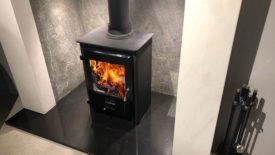Articles by John Siegenthaler, P.E.
Renewable Heating Design | John Siegenthaler
Digging into motorized 3-way diverter valves and actuator options.
Read More
Hydronics Workshop | John Siegenthaler
Combining “low-tech” heating with state-of-the-art heat pump technology
Plan B
May 1, 2024
Renewable Heating Design | John Siegenthaler
Modern hydronics technology can play well with future energy markets — Part 2
March 27, 2024
Hydronics Workshop | John Siegenthaler
Combining a wood-fired boiler with a hydronic distribution system
Doing wood right
March 27, 2024
Hydronics Workshop | John Siegenthaler
Does the boiler need to change when adding a heat pump?
Is it worth it?
March 1, 2024
Renewable Heating Design | John Siegenthaler
Modern hydronics technology offers unique solutions
Solid thinking: Part 1
February 28, 2024
Renewable Heating Design | John Siegenthaler
The challenge of reviewing proposed system schematics
Where’s Waldo?
February 1, 2024
Hydronics Workshop | John Siegenthaler
Options for connecting heat pumps to existing boiler systems
Tie ins
February 1, 2024
Renewable Heating Design | John Siegenthaler
Complementary fuel sources
Progression to renewably sourced energy should not be immediate, or exclusive to fossil fuels.
January 3, 2024
Hydronics Workshop | John Siegenthaler
The ‘ins’ and ‘outs’ of thermal storage
Hydronic systems stand ready to offer performance benefits as electrification movement advances.
January 2, 2024
Keep your content unclogged with our newsletters!
Stay in the know on the latest plumbing & piping industry trends.
JOIN TODAY!Copyright ©2025. All Rights Reserved BNP Media.
Design, CMS, Hosting & Web Development :: ePublishing











